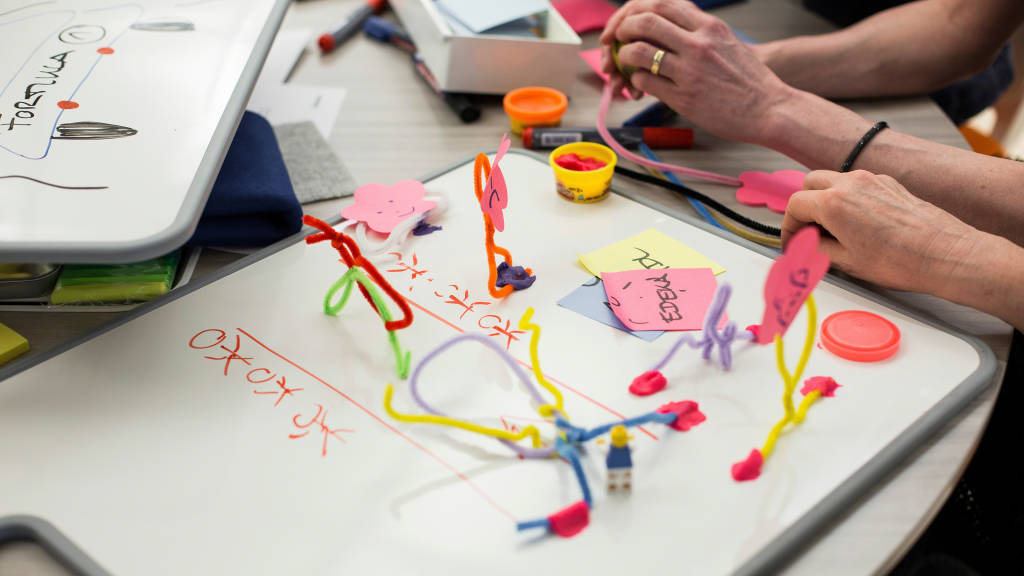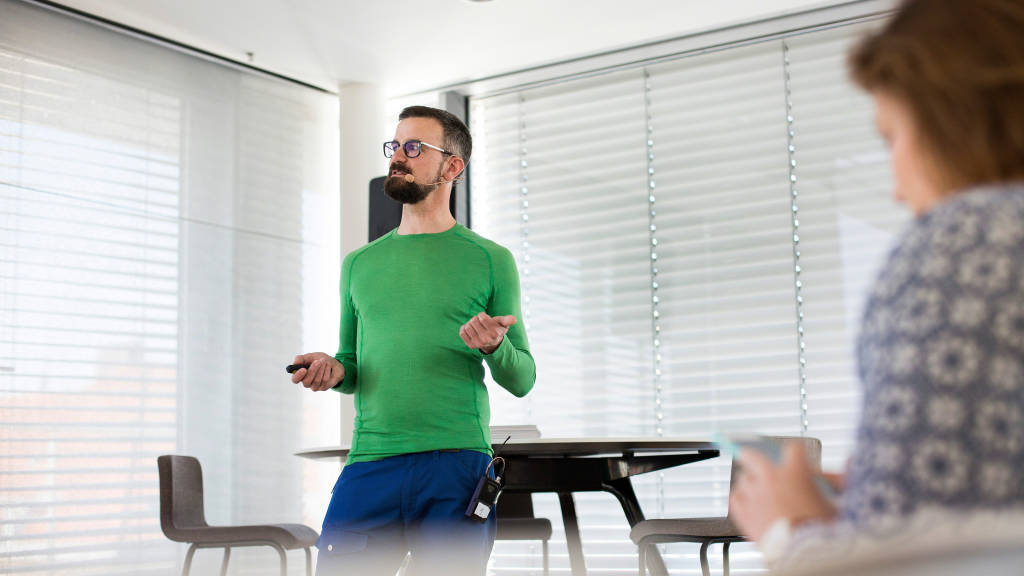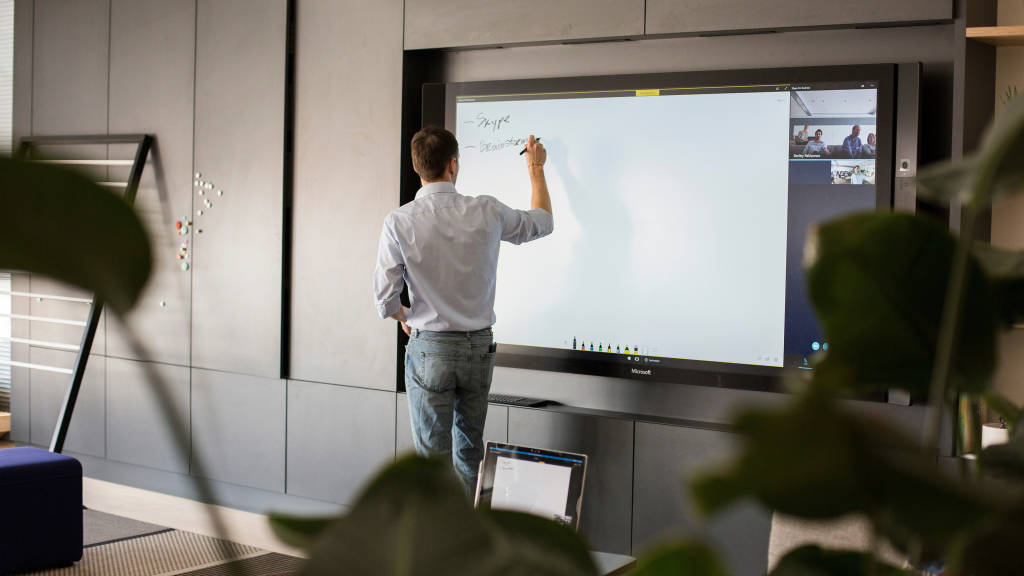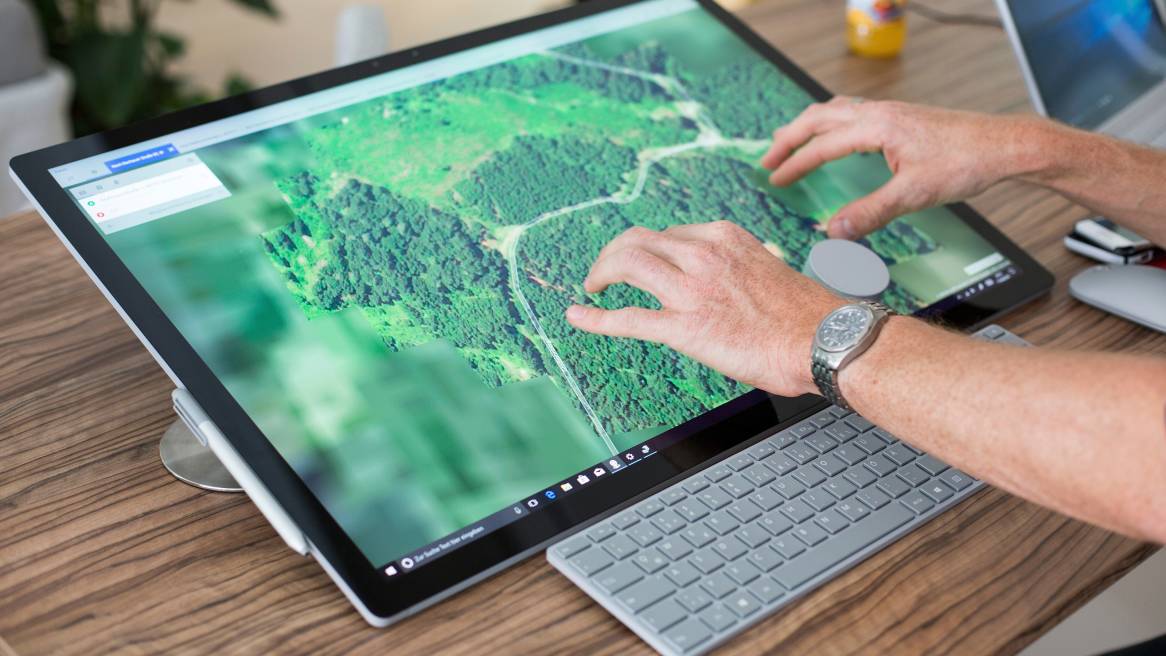Steelcase and Microsoft: Bridge the Creative Gap
Munich event highlights how the workplace and technology can help people reach their creative potential.
Creative problem solving is at the core of what makes us human. When it comes to business, leaders are increasingly seeking people with creative and innovative ideas who can propel growth. Yet, there’s a creative gap at work. A study by Steelcase and Microsoft revealed most people say they are not living up to their creative potential. To uncover how the workplace and technology can propel creativity, the Steelcase Learning and Innovation Center in Munich hosted an event with experts from Steelcase, Microsoft and Combine Consulting.
Dozens of people attended The Future of Work Is Creative in person and hundreds more watched online. Experts revealed four ways the workplace and technology can help bridge the creative gap at work.
Collection of Spaces
Combine Consulting, which works with real estate organizations around the globe, has created its own innovation space in Munich facilitating interdisciplinary creative, agile and collaborative work. André Nagel, who works in the new office, describes it as inspiring and motivating. The key, he says, is having a collection of spaces where people can work based on the activity they are doing.

The flexible structure provides areas for communication, collaboration, concentration and community. People can pick from project rooms, conference zones, quiet places to focus or rejuvenate or open and screened areas available to everyone. Everyone can work where their tasks are best supported. Nagel explained the staff and managers were integrated into the workplace redesign at an early stage to develop a successful concept for the company.
Integrating Place + Technology
“Digital transformation is creating increasingly complex problems that call for creative solutions,” said Lea Schumacher, product manager for Microsoft Surface. “Companies must find a way to encourage people’s creative potential and promote the creative process.”

Over the last year and a half, Steelcase and Microsoft have worked together to create places where people can be creative and ideas flourish. There’s a rhythm to the creative process. People come together to generate ideas, break apart to focus or collaborate in small groups and then regroup to iterate. Together, Steelcase and Microsoft have designed Creative Spaces, a collection of spaces with an integrated layer of technology to support the creative process.
“Too often companies think about technology and space in silos. They have different departments, IT and facilities, for each,” said Michael Held, design director for Steelcase. “But, when you design a workplace by thinking about these things together, you can support people’s ability to think creatively and act on ideas.”
Modern IT at Work
Microsoft technology specialist, Julia Eberl, emphasized the important role of modern IT in creative working environments. In the days of classic IT, she said, the workplace consisted of a fixed personal computer and a landline phone with support from an IT department. If something stopped working, employees filled out a form and waited for help — generally powerless and dependent on the company’s infrastructure.

Eberl contrasted that vision with one of modern IT which offers users several different digital and mobile devices along with access to corresponding applications independent of where they are working. People can work as easily from a hotel room or an airplane as they can from their desk. And, if something stops working, they should have immediate access to resources to help them diagnose and fix the problem. A comprehensive integration of technology in the workplace, she says, means the solution can be adapted to each person’s individual work situation and provides them with information to support how they work.
Global Connections
Technology and place play key roles as people connect with colleagues in other cities and countries. Microsoft shared how it worked with an international company trying to improve collaboration between locations in Germany and Vietnam. New technology solutions simplified, improved and accelerated communication, promoting cooperation and making projects more dynamic.
Steelcase researchers have spent years studying the tensions between distributed teammates and how the environment can help. Important considerations include the placement of cameras and microphones, planning for a range of team sizes and designing the environment to encourage movement and a range of postures. (Read more: Making Distance Disappear).
By thinking about people, place and technology together, The Future of Work Is Creative event helped people envision how a holistic workplace helps people solve problems and supports innovation.
To see Creative Spaces from Steelcase and Microsoft and learn more about why they help boost creativity, read The Creative Shift.


